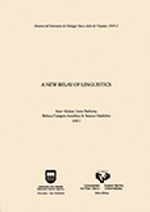Identifying and processing topicalization in Danish
##plugins.themes.bootstrap3.article.main##
##plugins.themes.bootstrap3.article.sidebar##
Argitaratua
2005-04-10
Sofie Raviv
Laburpena
In Danish there is a surprising asymmetry between pronouns and full DPs: pronouns can always be fronted, whereas full DPs are subjugated to more restrictions. This puzzle has not been addressed in the literature, and I argue that the split-CP analysis as presented by Rizzi (1997) cannot distinguish between pronouns and full DPs when they are marked with a topic feature. The analysis I propose is based on the claim that in Danish the purpose of fronting a constituent is to mark it as the main topic, rather than the need or necessity to check a certain feature. It is furthermore based on the observation that the presence of an overt case marked pronoun, an adverb or a modal/auxiliary enables topicalization. In order to account for the data I propose a (PF) processing constraint on dislocation, which ensures that the derivation has an unambiguous interpretation.
Nola aipatu
Raviv, Sofie. 2005. «Identifying and Processing Topicalization in Danish». Anuario Del Seminario De Filología Vasca "Julio De Urquijo" 39 (2):195-212. https://doi.org/10.1387/asju.4352.
##plugins.themes.bootstrap3.article.details##
Atala
Artikuluak
Lan hau Creative Commons Aitortu-EzKomertziala-LanEratorririkGabe 4.0 Nazioartekoa lizentzia baten mende dago.


